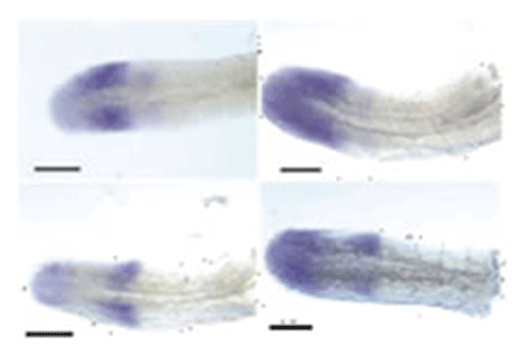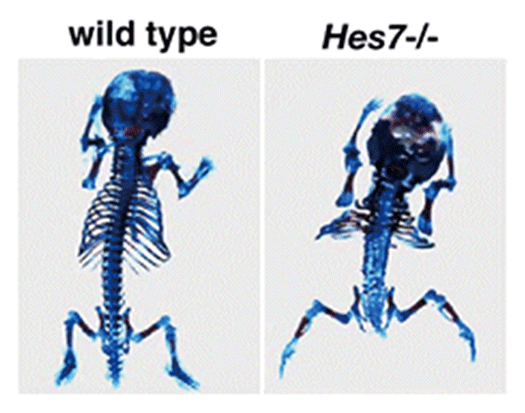Gene Regulation Research


- Professor
- BESSHO Yasumasa

- Associate Professor
- MATSUI Takaaki

- Assistant Professor
- KITAGAWA Norihiro

- INABA Yasuko

- Labs HP
- https://sites.google.com/view/bessho-lab-top
Outline of Research and Education
Organisms are composed of a number of cells arranged in a well-coordinated manner. A fertilized egg repeats cell division and differentiates into animal body in the embryogenesis, in which various phenomena take place in a predestined order that the inherent “biological clock” in living body controls. We attempt to clarify the principle of animal morphogenesis through investigating the mechanism of the “biological clock” that controls various life phenomena in the embryonic development.
Major Research Topics
Research for somitogenesis in vertebrates as a model system for the biological clock
A mouse's body is composed of metameric structure along the anteroposterior axis. For example, the spine is made up of accumulation of multiple vertebrae, each of which is similar in shape. Such metamerism is based on the somite, which is a transient structure in mid-embryogenesis. Somites are symmetrically arranged on the both side of the neural tube as even-grained epithelial spheres that give rise to vertebrae, ribs, muscles and skins.
The primordium of somite, located at the caudal tip of the mouse embryo, extends posteriorly. The anterior extremity of the somite primordium is pinched off to generate a pair of somite in a two-hour cycle, resulting in the formation of repeats of a similar size structure. On the basis of this finding, it has been considered that there is a biological clock, which determines the two-hour cycle, in the primordium of somite. The expression of several genes oscillates in the primordium of somite, corresponding the cycle of the somite segmentation, that serves as a molecular evidence of the biological clock. We are exploring the mechanism for biological block on the basis of such oscillatory gene expression.
Transcription factor Hes7 is specifically expressed in the primordium of somites (Fig.1) and in a cyclic manner (Fig.2). Through genetic and biochemical experiments, we have shown that Hes7 is involved as a principal factor in the mechanism for the biological clock that determines the two-hour cycle (Fig.2, Fig.3). We are conducting studies to understand the biological clock in a comprehensive manner.



References
- Sari DWK et al., Sci Rep, 8,4335, 2018
- Khaidizar FD et al., Genes Cells, 22, 982, 2017
- Yamada S. et al., Biol Open, 6, 1575, 2017
- Akiyama R et al., Development, 141, 1104, 2014
- Nitanda Y. et al., FEBS J, 281, 146, 2014
- Retnoaji B. et al., Development, 141, 158, 2014
- Matsui T. et al., Development, 139, 3553, 2012

 NAIST Edge BIO
NAIST Edge BIO